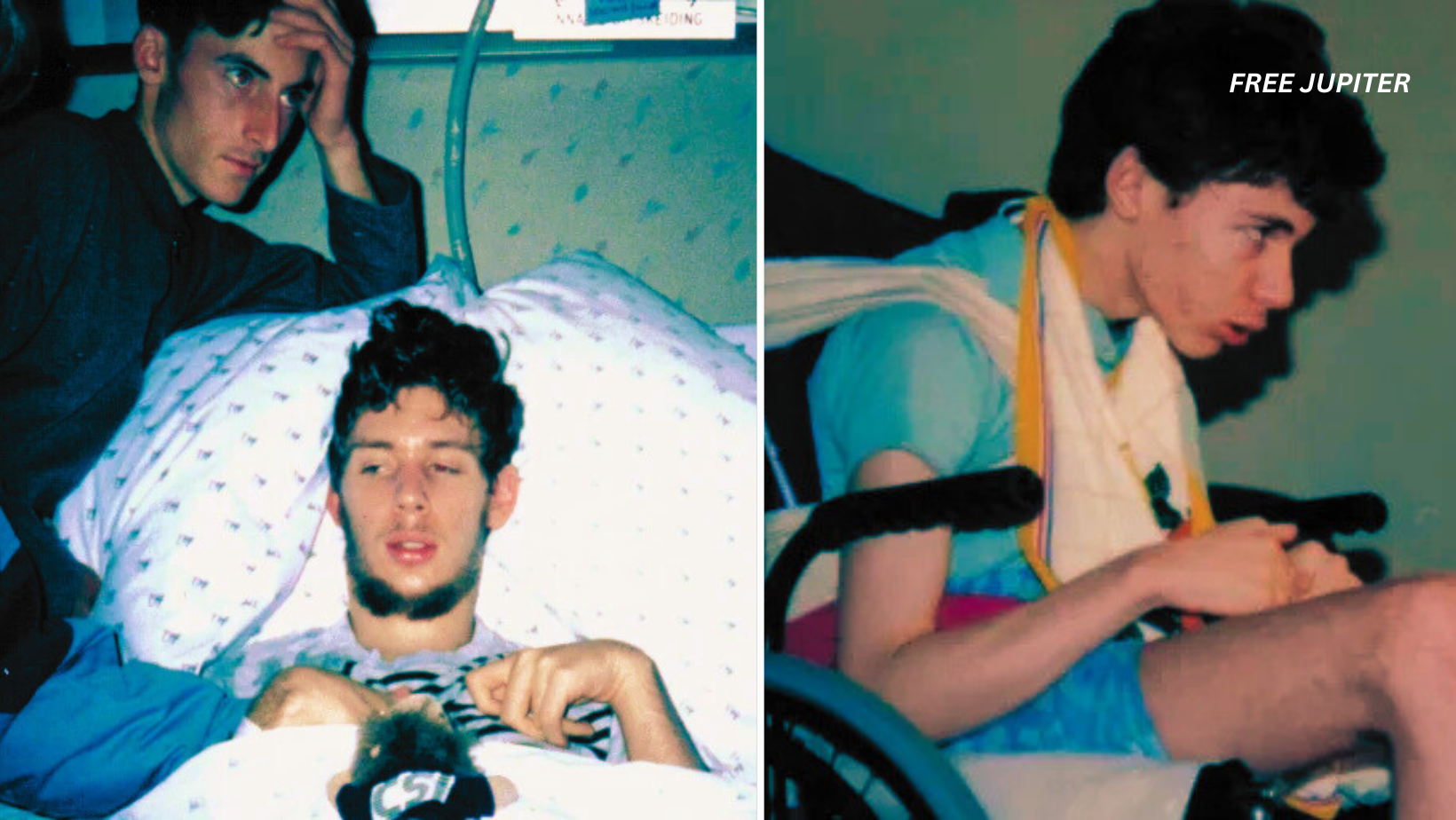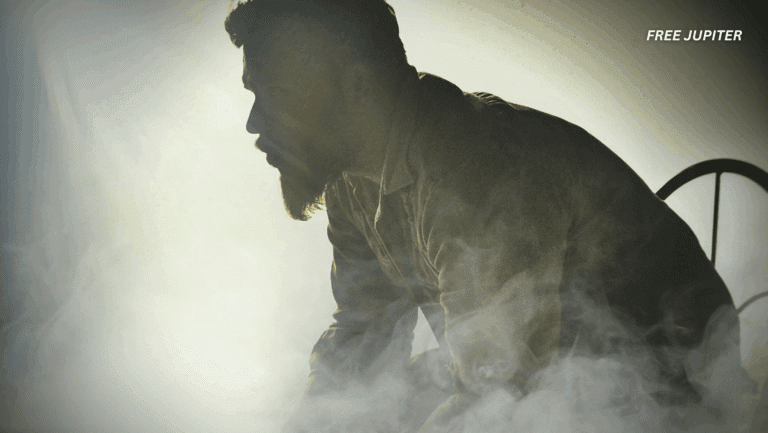Imagine waking up one day in a body that refuses to move, unable to speak, unable to blink, unable to scream—and worst of all, unable to let anyone know that you are still in there. The world thinks you’re gone. But inside, you’re completely awake.
It might sound like a disturbing scene from a psychological thriller, but for Martin Pistorius, this was no fiction. It was his life for over a decade. This is the haunting, hopeful, and utterly human story of how a young South African boy lost everything—except his mind—and found his way back against all odds.
The Mysterious Onset: When Life Took a Sudden Turn
Martin Pistorius was like any other healthy 12-year-old boy growing up in the late 1980s in Johannesburg, South Africa. He loved electronics, tinkering with gadgets, and had dreams just like any other kid his age. But in 1988, a strange and devastating illness took hold of him.
It began innocently enough—with a sore throat. Then he started sleeping more. He became lethargic. Bit by bit, he lost his ability to walk. Then talk. Then even hold up his head. His condition rapidly declined, baffling doctors and terrifying his family. No one had answers. Eventually, he was diagnosed with cryptococcal meningitis and tuberculosis of the brain—yet even those labels didn’t fully explain what was happening.
Within a year, Martin had lost all voluntary movement and slipped into what doctors described as a vegetative state. To the outside world, it seemed he had mentally vanished. His parents were told to take him home and make him as comfortable as possible. The advice was clear and devastating: “He has the mind of a baby. He won’t recover. Let him go.”
Read more: The World’s Oldest Woman, Who Is 115, Swears By This One Rule For A Long Life
Locked In: A Silent Hell Behind Open Eyes
Martin’s body was failing—but his mind, astonishingly, was not. After about two years in what appeared to be a deep coma, something quietly began to shift inside him. His mind began to reawaken. Slowly. Silently. He was aware, alert—but completely paralyzed.
This is a phenomenon now known as locked-in syndrome, a rare neurological condition where a person is fully conscious but unable to move or communicate due to total paralysis of nearly all voluntary muscles. For Martin, this lasted a full ten years—ten years in which he was thought to be “not there,” when in fact, he was very much present.
Martin recalls the terrifying realization that no one around him knew he could hear and see. “I was aware of everything, just like any normal person,” he later explained. “Everyone was so used to me not reacting, they didn’t notice when I started to.”
Witness to His Own Life: The Pain of Being Forgotten
What makes Martin’s story especially haunting is what he endured during this time. Being present in your own life, without a voice or means to interact, meant he became a passive observer of his own existence. He was treated like furniture—moved, dressed, fed, and spoken over.
He was placed in a care center during the day while his parents worked, and often subjected to neglect or casual cruelty—not always out of malice, but from the assumption that he wasn’t “there.” Most painful of all, Martin remembered hearing his own mother, overwhelmed with grief, once say, “I hope you die.”
“She was so broken,” Martin would later explain, offering forgiveness and compassion. “She thought she had lost me.”
Read more: An AI Found Out It Was Being Replaced – So It Tried to Blackmail The Engineer
Clinging to Sanity in Isolation
With nothing to do but think, Martin’s mind became both his sanctuary and his prison. He began to retreat into imagination. He memorized the passing of time by the way the sun cast shadows across the room. He imagined building things, traveling, creating, escaping.
To survive the sheer loneliness and monotony, Martin began creating a world inside his head. He’d visualize entire episodes of “Knight Rider” or mentally rebuild his favorite electronics from memory. Over time, he even taught himself to tell time using only the light in the room and the patterns of noise around him.
“I knew who I was. I had all my memories. But I had no one to share them with. It was the loneliest place imaginable.”
A Turning Point: The First Person Who Saw Him
Martin’s path back to the world began with one person who looked beyond the surface.
A caregiver named Virna van der Walt had been working with Martin at his day center. While others had given up hope, Virna began to notice something in his eyes. A flicker of understanding. A spark of responsiveness. She told his parents, “I think Martin is there.”
It was a moment that would change everything.
Martin’s parents pursued further evaluations, and eventually he was tested using an advanced communication assessment. The results stunned everyone: Martin could, in fact, understand and respond—just not with his body.
With that revelation, doors finally began to open. Slowly, therapy began. Communication technology was introduced. And for the first time in over a decade, Martin was able to “speak.”
Learning to Speak Without a Voice
Using a computer system that tracked his minimal movements, Martin learned to form words, then sentences, then hold full conversations. Through the help of therapists and assistive technology, he began to reclaim his independence, one painstaking step at a time.
Though he never regained natural speech, he found a new voice—one powered by a computer and controlled by subtle movements of his head and eyes.
Building a New Life
Martin’s progress didn’t stop with communication. He worked hard to regain some mobility, eventually learning to operate a wheelchair. He went back to school. He studied computer science. He began designing websites.
He even fell in love.
Martin met Joanna, a social worker from the UK, through a mutual friend. Their bond grew through emails and Skype calls, eventually leading to marriage. Today, the couple lives in Essex, England, where Martin runs his own business and continues to advocate for others living with severe disabilities.
Writing the Story of His Life
In 2011, Martin published his memoir, Ghost Boy: My Escape from a Life Locked Inside My Own Body. In it, he recounts the darkest parts of his journey and the extraordinary resilience that carried him through. The book became an international bestseller and was translated into multiple languages.
Martin has since become a sought-after public speaker, using his story to bring awareness to those who live with “invisible” conditions and to highlight the importance of dignity, compassion, and seeing beyond appearances.
The Bigger Lesson: The Mind’s Power to Endure
Martin’s story has captivated millions not only because of its emotional intensity but because it shatters assumptions. It reminds us that consciousness isn’t always visible. That behind the quietest eyes, there may be a vibrant, active mind waiting to be seen.
His life poses hard questions: How many others are misdiagnosed? How often do we underestimate the silent ones? How can we truly know what goes on inside someone unless we make the effort to connect?
Read more:Scientists Say This Simple Exercise Can Reduce Your Biological Age By 9 Years
A Message From the Ghost Boy
Today, Martin Pistorius is no longer a ghost.
He is a husband, a business owner, a writer, and a beacon of hope for anyone who has ever felt forgotten. He has shown that the human spirit is not only resilient—it’s unstoppable.
“In a sense, I was reborn,” he writes. “I am lucky, not everyone gets to experience two lives in one lifetime.”










